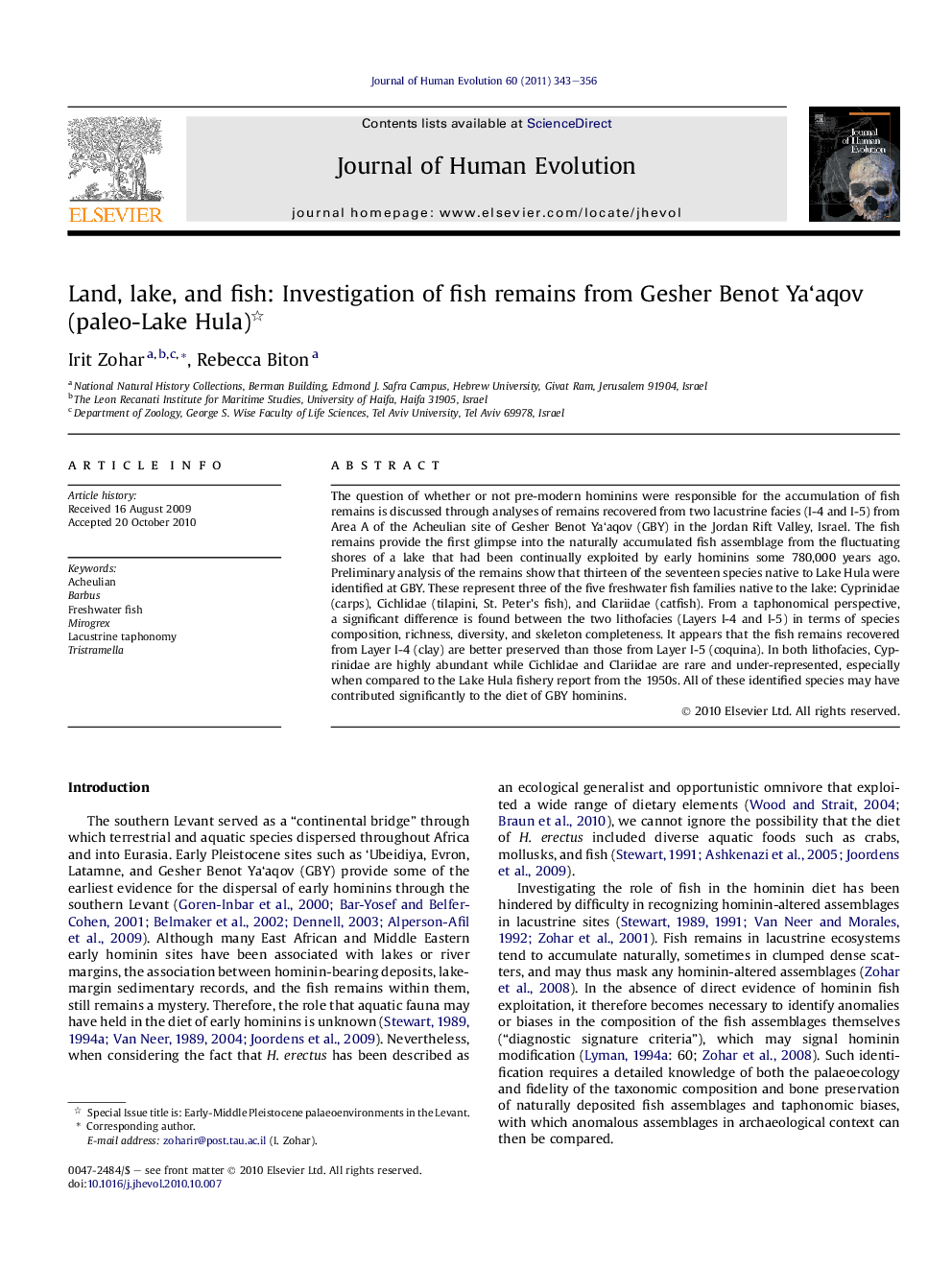| کد مقاله | کد نشریه | سال انتشار | مقاله انگلیسی | نسخه تمام متن |
|---|---|---|---|---|
| 4556582 | 1329489 | 2011 | 14 صفحه PDF | دانلود رایگان |

The question of whether or not pre-modern hominins were responsible for the accumulation of fish remains is discussed through analyses of remains recovered from two lacustrine facies (I-4 and I-5) from Area A of the Acheulian site of Gesher Benot Ya‘aqov (GBY) in the Jordan Rift Valley, Israel. The fish remains provide the first glimpse into the naturally accumulated fish assemblage from the fluctuating shores of a lake that had been continually exploited by early hominins some 780,000 years ago. Preliminary analysis of the remains show that thirteen of the seventeen species native to Lake Hula were identified at GBY. These represent three of the five freshwater fish families native to the lake: Cyprinidae (carps), Cichlidae (tilapini, St. Peter's fish), and Clariidae (catfish). From a taphonomical perspective, a significant difference is found between the two lithofacies (Layers I-4 and I-5) in terms of species composition, richness, diversity, and skeleton completeness. It appears that the fish remains recovered from Layer I-4 (clay) are better preserved than those from Layer I-5 (coquina). In both lithofacies, Cyprinidae are highly abundant while Cichlidae and Clariidae are rare and under-represented, especially when compared to the Lake Hula fishery report from the 1950s. All of these identified species may have contributed significantly to the diet of GBY hominins.
Journal: Journal of Human Evolution - Volume 60, Issue 4, April 2011, Pages 343–356